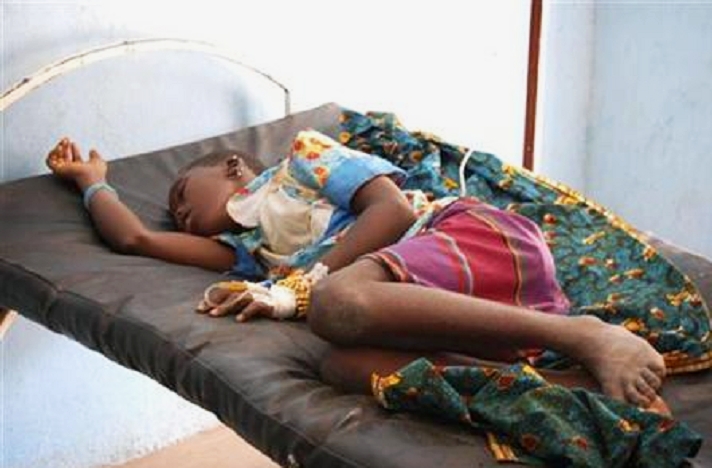Reports reaching Starr News say at least 6 people have died in 58 suspected cases of cerebrospinal meningitis (CSM) recorded since January, 2017, in the Upper East Region.
Confirming the reports to Starr News, the Ghana Red Cross disclosed that public education on the dreaded disease had begun everywhere and strongly advised those showing symptoms of infection to steer clear of self-medication.
“Those are the figures we got in the latest health meeting we attended- 6 dead in 58 cases in the whole region. We have started the education in all the districts, telling the people they should not sleep in closed rooms. Even if they are in rooms, they should open the windows or just lie outside. They should report cases of headache, joint pains immediately to the nearest health facility. They should not self-medicate. They should not remain in the houses and be medicating,” the Upper East Regional Secretary of the Ghana Red Cross, Joseph Abarike Azumah, cautioned.

About 760 CSM cases were reported in the region between 2012 and 2015. And, at least, 56 people lost their lives during that period.
Over 100, 000 children targeted for CSM vaccination in 2016
The Ghana Health Service embarked on a vaccination exercise in 2016 to immunise some 134,917 children between ages 1 and 4 years in the region against the disease.
It was the biggest vaccination target so far but one widely criticised for wrong timing as heavy downpours disrupted the exercise that lasted from Wednesday July 20 to Tuesday 26 July that year. It came after the disease had claimed 8 lives in 78 cases reported in the region in 2015 with several more cases recorded also early in 2016.
The potency of the vaccines administered last year is expected to last 10 years, implying that the children vaccinated in 2016 will only be due for another vaccination in 2026.
The deadly scourge of CSM
CSM has remained a familiar terror in northern Ghana for more than a century. This is because this part of the country falls within the CSM belt that runs from Senegal in West Africa to Ethiopia in East Africa. Until recent times, the disease hardly struck in southern Ghana.
It is an acute inflammation of the protective membranes that cover the brain and the spinal cord. The inflammation may be caused by infection with viruses, bacteria or other microorganisms.
The disease is considered a medical emergency because of the deadly threat it poses to the patient. The most common symptoms of the disease are headache and neck stiffness associated with fever, vomiting and inability to tolerate light and loud noises. The disease, if not treated quickly, can lead to such serious long-term consequences as deafness, epilepsy, hydrocephalus and cognitive defects, with the ultimate consequence being death.





